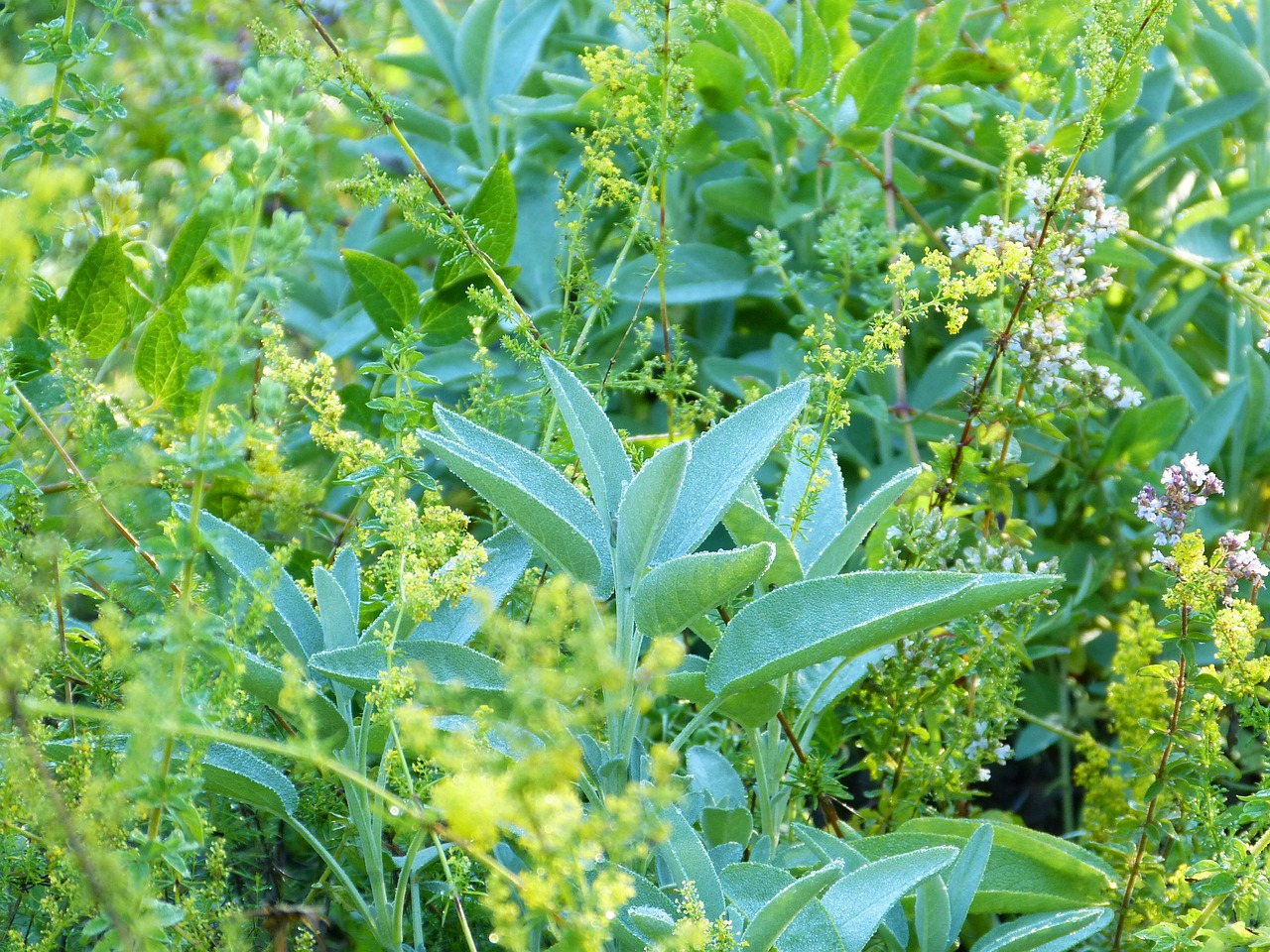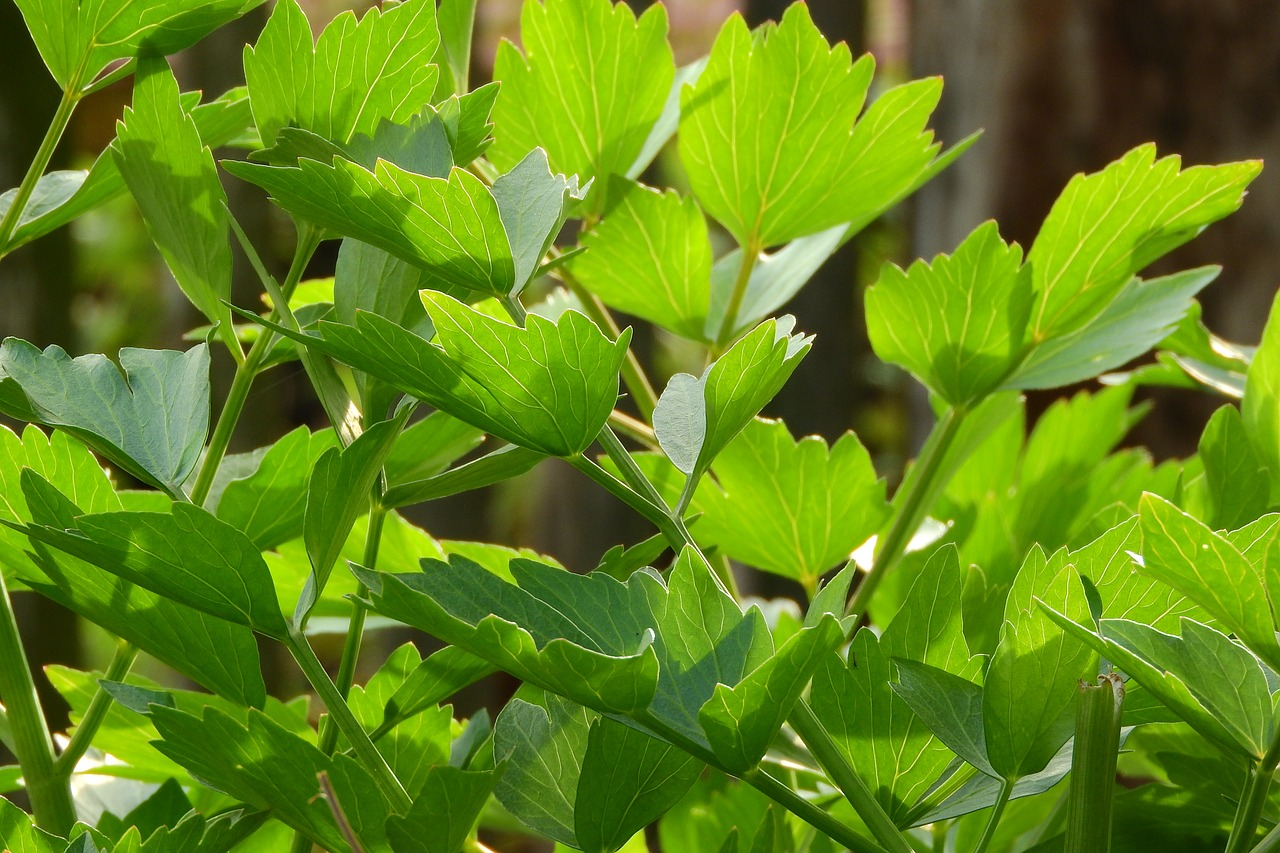
What Herbs Can Be Planted Together?
To ensure that your herbs grow well in a bed or balcony box, you should pay attention to which plant partners you put together. This is because not all herbs get on well together. This is why you will get particularly healthy and large aromatic plants if you follow certain rules of mixed herb cultivation. I would like to introduce these to you here. You will also find a table with the most popular herb combinations.
This Article Contains:
Quick Overview
What Herbs Can Be Mixed Together?
- There are herbs that you should rather not plant in the herb bed, as they inhibit the growth of their companioins. Wormwood, lovage and angelica are better planted individually.
- Lavender can be combined well with other plants. Good companions include lemon balm, oregano, rosemary, sage, thyme and curry herb. Parsley does not like being next to lavender.
- Lemon balm also has many good companions such as coriander, lavender, mint, marigold, sage, chives and thyme. Basil should be planted somewhere else.
- You can plant basil together with marigold, fennel, oregano, parsley, rosemary or coriander. Bad companions are savory, marjoram, lemon balm, mint, sage and thyme.
- You can find an overview of the companions of numerous herbs in our table, which is available To Download as a PDF.
Why Mixed Cultivation in the Herb Bed?
Mixed Cultivation is not only beneficial for vegetables. This principle can also be applied to herbs. Here are a few reasons why mixed cultivation in the herb bed or balcony box is a good idea:
- Avoiding competition for nutrients: The different nutrient requirements of different herbs in the soil means there is less competition between companion plants. This means that all plants in the bed can be optimally supplied.
- Similar site requirements: Herbs with similar light or soil requirements can be planted together in the "optimal" place in the garden. Some herbs prefer a brighter spot, others a shadier one. Still others prefer a lot of moisture while others like it rather dry.
- Pest defense: Herbs are often used as partner plants in mixed cultivation. This is mainly due to their strong scent. The volatile substances not only repel pests from the herb, but also from certain other plants. Cleverly combined, you not only plant a tasty culinary herb in your garden, but also get a natural pest repellent.
- Attracting beneficial insects: These aromas not only keep pests away, but also have a particularly attractive effect on many a pollinator and beneficial insect. Certain herbs attract Beneficial Insects, which destroy potential pests of their companion herbs.
- Different space requirements: To ensure that none of the planting partners are restricted, the companions should have different growth forms. This applies both above and below ground. It therefore makes sense to plant deep-rooted and shallow-rooted herbs next to each other. That way they don't steal each other's root space and nutrients. However, herbs with sprawling foliage combined with herbs with a more compact growth habit also feel at home next to each other.
- Do not mix annual and perennial herbs: Annual herbs must be sown or planted anew each year. To avoid damaging the roots of perennial herbs, it is advisable to plant annual and perennial herbs separately. If you cultivate your herbs in a balcony box or raised bed, you can Make Your Own Herb Soil. You can find out how to do this in our article on the subject!
What Herbs Don’t Grow Well Together?
Some plants need a lot of space and don't like anyone getting too close to them. This applies to vegetables, but also to herbs. This is partly due to their space requirements and partly because they can inhibit the growth of other plants around them (Allelopathy).
Plant these herbs with a bit more distance from others.
- wormwood
- lovage
- angelica

Find out About Companion Plants for Your Favorite Herbs!
Our library provides information on many herbs, including growing seasons, planting tips, and harvesting instructions. You can also find good and bad companion plants to help you plan a mixed crop.
Check out Our Plant Library

Table: Herbs That Grow Well Together
In the following table you will find all the beneficial combinations of herbs. It also shows which companions you should avoid in the herb bed.
| Basil | marigold, fennel, oregano, parsley, rosemary, coriander | savory, Marjoram, Lemon Balm, Mint, Sage, Thyme |
| Savory | marigold, oregano, parsley, sage, thyme, curry herb | basil, mint |
| Borage | savory, marigold, dill, tarragon, coriander, marjoram | parsley |
| Dwarft everlast | savory, lavender, sage, thyme, tarragon | - |
| Dill | marigold, chervil, marjoram, parsley, chives | tarragon, fennel, sage, thyme |
| Coriander | marigold, rosemary, thyme, basil, tarragon, camomile, marjoram, mint, sage, lemon balm, aniseed, lemon verbena | fennel, chives, garlic, chervil |
| Chervil | marigold, dill, marjoram | coriander, parsley |
| Camomille | marigold, chives, coriander, mugwort, parsley | mint |
| Lavendar | lemon balm, oregano, rosemary, sage, thyme, curry herb | parsley |
| Marjoram | marigold, dill, chervil, coriander, parsley | basil, fennel, oregano, thyme |
| Mint | marigold, coriander, lemon balm | basil, savory, chamomile, parsley, thyme |
| Oregano | basil, savory, marigold, rosemary, sage, chives, lavender, mugwort | marjoram |
| Parsley | basil, savory, marigold, chamomile, marjoram, thyme | fennel, chervil, mint, lavender, dill, borage |
| Rosemary | basil, marigold, coriander, oregano, sage, thyme, lavender | chives |
| Sage | savory, marigold, fennel, coriander, lemon balm, oregano, rosemary, thyme, lavender, curry herb | basil, dill |
| Chives | marigold, dill, camomile, lemon balm, oregano, thyme | coriander, rosemary |
| Thyme | savory, marigold, tarragon, lemon balm, rosemary, sage, chives, lavender | marjoram, basil, dill, mint |
| Hyssop | lavendar, thyme | mint, anis |
Tip: A Herb Spiral is a great place to try out and use mixed herb cultures.
Mixed Cultivation With Herbs and Vegetables
Of course, you can not only grow herbs separately in a herb bed. They can also be wonderfully integrated into your vegetable patch. In the spirit of mixed cultivation, herbs can also keep pests and diseases away or attract beneficial insects with their scent. Herbs can also improve the growth and taste of vegetables. You can find more information on this in the article on Mixed Cultivation With Herbs and Vegetable Plants.
Companion Planting With Herbs
Herbs are a wonderful addition to a mixed culture. Vegetables often benefit from herbs because they attract beneficial insects and can contribute to plant health. Some herbs can also enhance the flavor and aroma of vegetables. Mixing herbs in a bed is also a good idea. A diverse herb bed looks great and provides plenty of food for insects. For examples of your mixed herb garden, click here.
If you have any questions or comments, please write to us at magazin@fryd.app. Would you like to receive helpful gardening tips all year round and plan your own beds optimally? Then register here or download the Fryd app for Android or iOS.
Fryd - your digital bed planner
Cover picture by silviarita on pixabay.
Isabell
Current Topics in the Community

#red , #tuesday

Liked 1 times
#testpostcount

Dec 2025
Popular Articles

Companion Plants for Carrots: What (Not) to Plant With Carrots

Companion Plants for Celery : What (Not) to Plant With Celery?

Strawberry Types: List of Best Strawberry Varieties

Companion Planting With Strawberries: Companion Plants and Planting Plan

Basil Varieties & Types at a Glance

What to Plant With Cabbage: Good and Bad Companion Plants

Fertilizing Strawberries: Home Remedies & Natural Fertilizers at a Glance

Growing Sweet Potatoes: Tips on Cultivation & Companion Plants

Companion Plants for Kitchen Herbs: Chives, Parsley & Co

What Herbs Can Be Planted Together?
FAQ
Which plants are good companion plants for marjoram?
In the herb bed, marigold or dill go well alongside marjoram. The herbs chervil, coriander and parsley are also good companion plants. Thyme, fennel, basil or oregano are less suitable next to marjoram.
What are good companion plants for oregano?
Alongside oregano, you can plant sage, chives, marigold, rosemary, savory, lavender or basil. You should look for a different spot for marjoram, as it does not get on well with oregano.
What are bad companion plants for dwarft everlast?
There is no data available on bad companion plants, but dwarft everlasting likes to grow in sandy, dry locations. Sage and lavender, for example, are therefore good companion plants. On the other hand, water-loving herbs such as watercress or wild garlic could die of thirst in such a location.
Which plants go well next to curry herb?
Good companion plants for curry herb are other mediterranean herbs such as savory, lavender, sage, thyme and tarragon. These are all herbs that like a sunny position and prefer poor soil.
